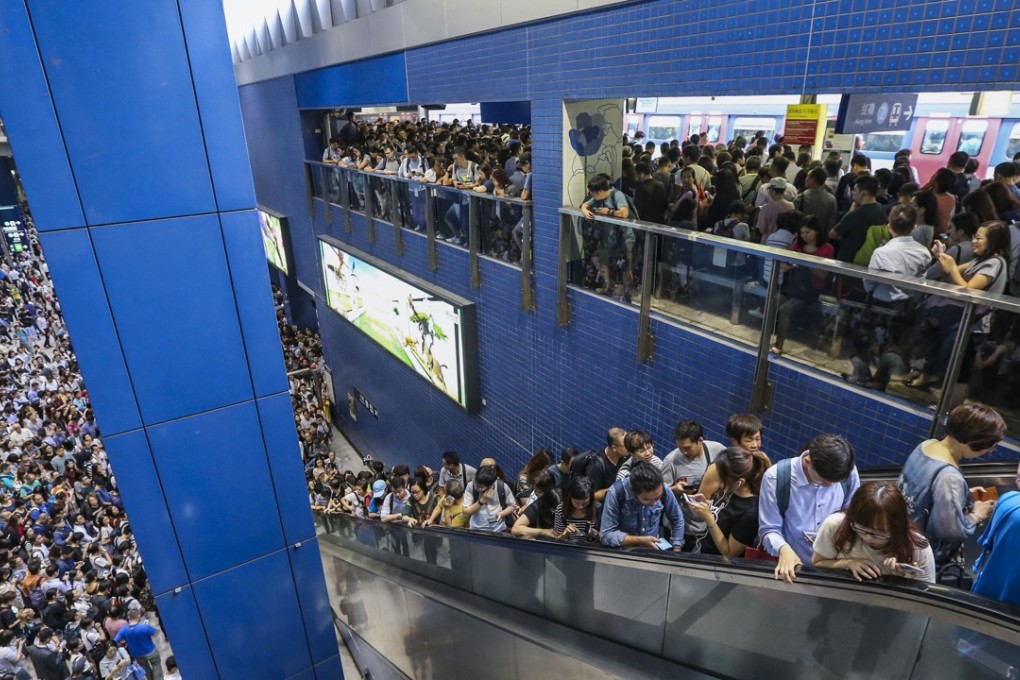Typhoon Mangkhut travel chaos: how one woman’s Hong Kong commute took more than two hours and a trip in the wrong direction
Lily Ng’s daily commute to Wan Chai became an odyssey of more than two hours, including a crowded platform and taking train in the wrong direction

After bunkering down to avoid the most intense storm to hit Hong Kong since records began, the city’s 3.8 million working residents emerged from their shelters on Monday to return to work.
But for many the trek was an arduous one, with the major pressure point coming at Tai Wai station – where the East Rail and Ma On Shan lines meet.
Lily Ng’s daily commute to Wan Chai, which normally takes about an hour, became a dreadful and circuitous journey that took her more than two hours.
“The impossible knot was in Tai Wai station,” Ng said.
“There were so many people in the departure hall and on the platforms that I felt dizzy.”

Linking 13 stations from the Lo Wu and Lok Ma Chau checkpoints on the mainland Chinese border with Hung Hom on the southern tip of Kowloon, the East Rail Link is one of the busiest lines in Hong Kong, carrying an average of 172,000 passengers during the morning peak hours, according to the railway operator MTR Corporation.